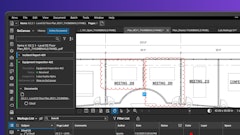
The construction industry’s skilled labor shortage is costing it huge amounts of money.
Just how much money, exactly?
In the case of equipment repair technicians alone, a 2015 study conducted by The College of William & Mary on behalf of the Associated Equipment Distributors (AED) estimated that the technician shortage was costing the heavy-duty equipment distribution industry more than $2.4 billion per year in lost revenue.
That’s just equipment technicians. What about all of the other occupations that require special skill-sets? The financial losses become even more jaw-dropping.
The skilled employee shortage could be growing even worse. Construction industry companies, particularly equipment dealers and distributors, are bracing for roughly 10% of their workforces to retire by the year 2022. On top of that, two-year college enrollment is lagging far behind four-year colleges.
Other technical vocations such as automotive repair are also feeling this trend, creating intense competition for what skilled labor candidates do exist.
Construction industry companies that don’t want to fall victim to the skilled labor shortage need to think about their strategies for recruiting employees. The sources and methods relied upon in the past may no longer work.
Causes of the skills gap
Lack of people with the required “hard skills.” In years past, a solid pool of construction industry candidates were younger people who’d grown up on farms. That pool is much smaller today. Similarly, there aren’t as many small diesel repair shops as in the past.
Technician issue has always been a local problem. Many up-and-coming repair technicians go away to school but want to come back home to find a job. In many instances, the end result is a dealership hiring a great employee, only to see them quit a year or two later.
Parents prefer four-year schools. The phenomenon of the 1990s still exists today: Parents push their children toward four-year degrees. In many instances, though, a young person would be better served to pursue a two-year degree that offers great career opportunity in a certain occupation.
Recruiting starts too late. The construction industry hasn’t been aggressive enough in its outreach to high school guidance counselors. The thought today is that outreach must begin when students are still in middle school. These young minds need construction industry exposure much earlier than they have been getting it. So do the educators who are teaching and advising them. When everyone understands the opportunities in construction, the likelihood is greater that CTE (career and technical education) programs will continue to be offered.
Federal programs such as the Perkins Act, which provide funding for technical education, have been reinvigorated. Perkins also promises that employers will have an instrumental voice as to how state funds are allocated. Thus, it is very important for the construction industry — state by state — to speak with a strong, unified voice.
“The AED now has a 50-state playbook that tells you where the funds are going, who’s getting them and how much they are — and how we can help ourselves,” says Robert Henderson, executive vice president and chief operating officer of AED.
Another common practice is for employers to contact schools shortly before graduation to ask if any students are looking for employment. With the labor shortages across so many industries, it’s unlikely that this tactic will produce the desired results going forward.
“If you’re asking for students at this point in time, the answer could very well be ‘none,’ or at the least, ‘very few,’” says Terry Marohl, associate professor/chair transportation, North Dakota State College of Science. “And for the students who are left, there’s probably a reason that they don’t have a job yet.”
One of the challenges with this outdated approach is that a graduating student likely knows very little about the company recruiting them. Likewise, the company likely knows very little about the student, i.e. background, interests, personality, etc. This is another reason why it’s important to start the recruiting process earlier than in the past.
Tips for starting outreach earlier
Companies should identify and begin recruiting local individuals before they begin college. This will help ensure that the student has a better understanding of a company when it comes time to graduate and enter the workforce.
“If you identify local people who’d be a great fit for company, and encourage them to go to school to get training, they may have to go away to school, but they can then come back to you when they graduate to begin work,” Marohl says. “You have a much greater chance of retaining that type of employee.
“Hiring local individuals is like growing your own employees,” Marohl continues. “A lot of dealerships are now talking with juniors and seniors in high school to generate some interest in this type of career, and to see which students may have a knack for what they’ll need to do.”
As for outreach to college students, companies should work to recruit and identify potential employees in their first year of school, as opposed to weeks or days before they graduate. Then, companies should begin attending career fairs for not only graduating students but also students just beginning college who may be seeking part-time or summer employment. Internships can be a very effective tactic.
There are many advantages to conducting student outreach earlier in the student’s career:
- Build better relationship with a student
- Allow both student and employer to determine if they are a good fit
- Work with school to help tailor student’s education to the needs of the industry and specific job
Staying engaged with the student throughout their academic career is important. Companies can get involved with clubs and other student organizations, helping to sponsor events or provide guest speakers. Some companies also arrange field trips to either the company itself or other industry events, for example.
Why companies should hire military veterans
According to David Coe, senior vice president of strategic programs for Orion Talent, military veterans are proven to perform 4% better than the average employee. Additionally, turnover among veterans is 3% lower. Construction industry companies that can effectively recruit, assimilate and retain military veterans into their organizations can make great strides in closing the skilled labor gap.
The challenge for employers is that demand for military talent is also at an all-time high. Companies need a well-defined strategy for approaching military veterans as prospective employees. The good news is that, according to Coe, the construction industry is very appealing to military veterans.
Orion Talent helps employers find the best way to hire military veterans. Coe himself is a retired active-duty U.S. Marine Corps officer and understands the process very well. He points to several best practices Orion Talent has identified.
Create a military talent program. Companies should involve all key decision-makers in the development of that plan. That includes human resources, operations, etc. Make it about your company, not what other companies are doing in the way of military veteran outreach.
Understand military talent. Companies should focus on gaining a clear understanding of the backgrounds and skill-sets each veteran is suited to. That helps match the right people to the right positions.
Develop a branding and outreach campaign. Traditional recruiting methods typically don’t work well when it comes to military talent. It’s important to reach veterans where they are, keeping in mind the uniqueness of their job search situation.
Make on-boarding a priority. It’s important to properly assimilate a veteran into your organization. Companies can create mentoring programs and networking opportunities to help veterans transition into not only the company but the civilian world in general. Companies should also pay attention to benefits that will appeal to veterans.
Set measurable goals and objectives. Companies should identify and track key metrics including hiring, performance and retention. Here are some key metrics to keep in mind:
- Most veterans go from first interview to accepted offer in under 35 days
- Interviews take place within 20 days of application
- Hiring managers respond in one or two days
- Time to selection is two to four days
It’s important to keep these metrics in mind because, as pointed out, demand for military talent is higher than ever. Companies that fail to act in a fast, compelling fashion will likely miss out on great talent.
Avoiding bad hires
Hiring employees costs a lot of money. According to Jerry Randecker, past president and owner of Jordan-Sitter Associates, an employee recruiting firm, that cost can range from 16% for entry-level employees, to 213% for senior management. Those costs mount as a result of job postings, administration, employee training and everything else that goes along with hiring a new employee.
With that kind of money involved, companies cannot afford to make bad hires they end up having to replace.
So how do companies avoid making bad hires?
“In many situations, it’s best to not hire at all than to hire simply the best person you have available,” Randecker says. In other words, it’s important to avoid the desire to settle. Companies need to find an ideal match. “In today’s environment of low unemployment, this is getting more difficult to do. It’s now a full-time occupation to keep good talent coming along,” Randecker points out.
There are some core best practices that can help companies find their ideal match.
- Have a well-defined job description — then the employer knows precisely what it is looking for.
- Identify good candidates through multi-faceted recruiting — job postings, temp agencies, trade schools, specialized recruiting firms, etc.
- Don’t forget about referrals and word of mouth — statistics show that many younger employees found their last job through a social network such as Facebook or LinkedIn. Internal job postings can also prove very effective these days. Local organizations and churches, etc. can also be great sources of potential employees.
- Have a plan and prepare for interviews — proper questioning of a candidate helps get beyond what they want you to hear and have prepared for. “You need to spend some time with people to really learn about who they are,” Randecker points out.
- Don’t rely too much on interviews, though — “It’s amazing what you’ll find out about a candidate by simply doing a Google search after the interview,” Randecker says.
- Employee assessments are also important — references, drug tests, criminal record, driving record. This is especially important when hiring lower-paying, entry-level employees. “As you go through the hiring process, don’t take anything for granted and check all the boxes,” Randecker advises.
- Put a job offer in writing — This is to make sure everyone is on the same page with respect to pay and benefits, etc.
- Follow-up with employees daily, monthly and annually — and it doesn’t have to be a formal review every time. “If you’re hiring someone for the long-term, though, there needs to be constant communication,” Randecker says. Just checking in to see how things are doing can be very effective in encouraging employees to stick around.
Online job boards such as Monster, Career Builder, Indeed and Craigslist can yield good results, but companies have to expend some effort. These popular websites will often generate a large volume of applicants, but many may be ill-suited to the job you are looking to fill. So again, it’s important to have a well-planned recruitment strategy — complete with well-defined job descriptions and job requirements — in order to generate as high a concentration of good leads as possible.
CONEXPO-CON/AGG has released a downloadable eBook "The Ultimate Construction Career Guide" as a precursor to the upcoming CONEXPO-CON/AGG 2020. The eBook is the culmination of numerous articles and guides that provides tips and expert advice to help men and women get started in the construction trades or flourish in your current role. There is peer-to peer advice from successful professionals at some of the best companies in the construction industry. Furthermore, experts in all things “HR” share their insight into the construction industry.
To download and read The Ultimate Construction Career Guide, including more tips on finding skilled labor, visit https://www.conexpoconagg.com/ultimate-construction-career-guide/.


















